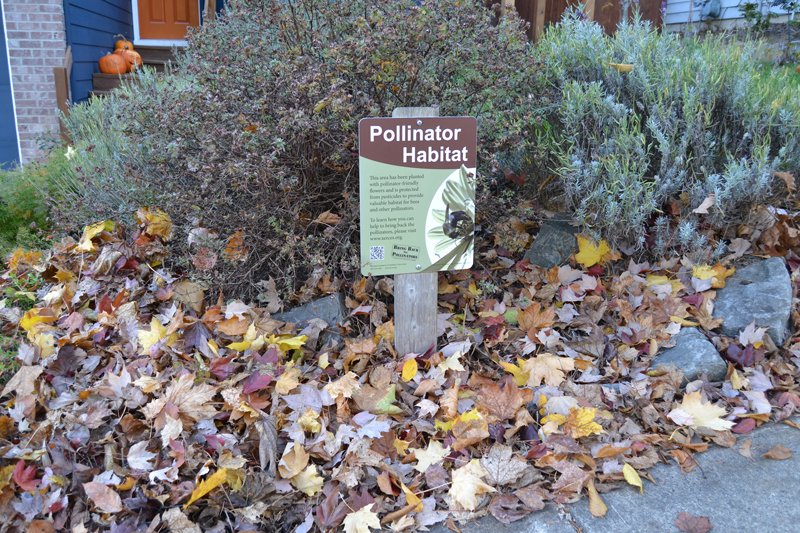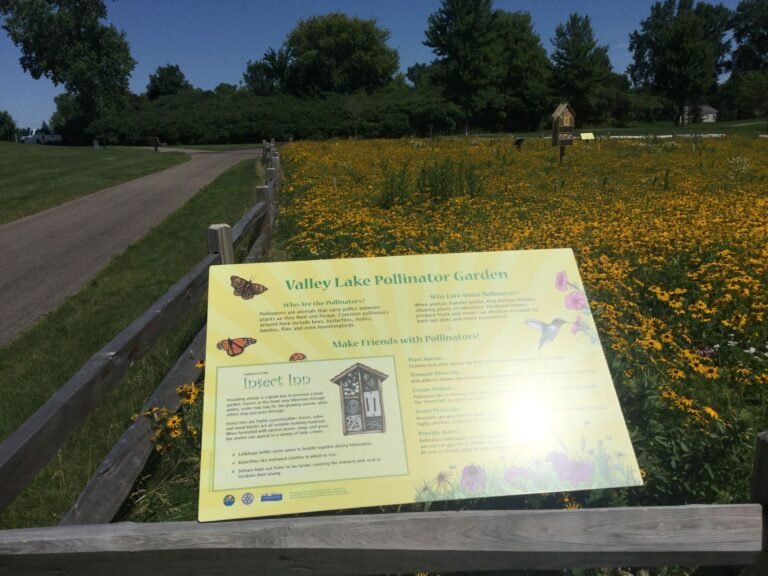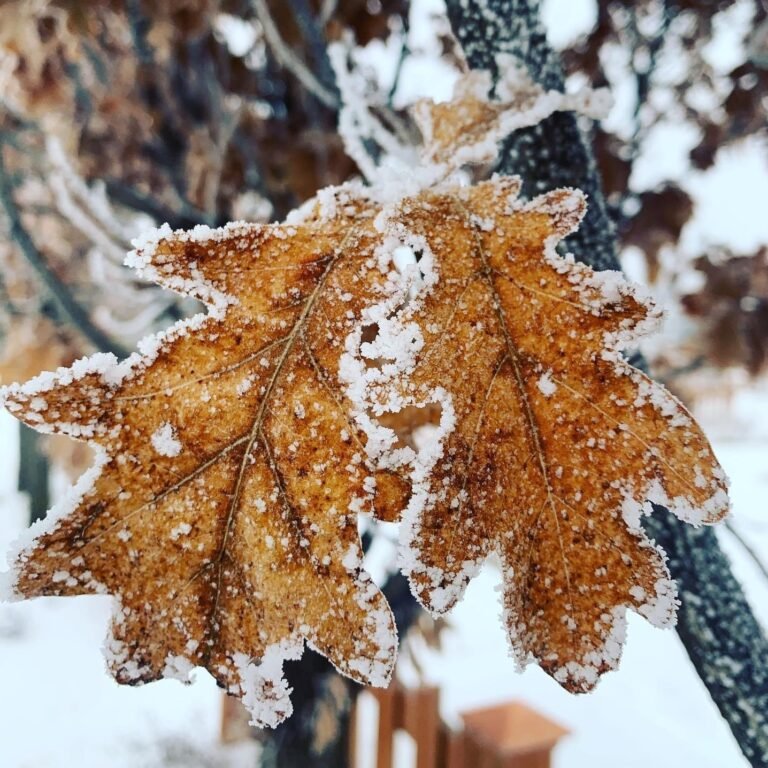As winter wraps its chilly fingers around the garden, care for pollinators mustn’t go dormant. These tiny garden visitors need our help more than ever during the cold months.
While many think of spring as the season to cater to bees, butterflies, and other beneficial insects, winter garden maintenance plays a crucial role in supporting these vital creatures. With the right approach, gardeners can create a haven for pollinators, even as frost coats the ground.
A garden buzzing with life brings joy no matter the season. Yet, as temperatures drop, our winged friends face tough times. They need places to shelter and food to survive the winter. This is where your green thumb can make a difference. With thoughtful planning and simple steps, you can ensure your garden remains a sanctuary for pollinators. From planting winter-blooming plants to providing frost-free water sources, every action counts. This guide will show you how to maintain a pollinator-friendly garden through the coldest months, ensuring a vibrant and thriving ecosystem come spring. Ready to bundle up and tend to your winter garden? Let’s prepare a safe retreat for our pollinator pals!
Importance Of Pollinators In Winter Gardens
Gardens may seem dormant in winter, yet pollinators remain vital. These tiny workers help plants thrive. They ensure our gardens will burst with life come spring. A winter garden can be a lifeline for pollinators. It provides shelter and food during cold months.
Key Roles Pollinators Play
- Support food chains
- Help plants produce fruit and seeds
- Maintain biodiversity
- Enable flowering plants to reproduce
Challenges For Pollinators During Winter
Winter brings tough times for pollinators. Cold snaps and scarce food make survival hard. Gardeners can help. They can plant winter-blooming flowers. They can also leave seed pods for extra food.
Pre-winter Garden Assessment
Winter draws near. It’s time to assess gardens for pollinator support. Pre-Winter Garden Assessment ensures a thriving ecosystem. Let’s evaluate and identify key plants.
Evaluating Your Garden’s Pollinator-FriendlinessEvaluating Your Garden’s Pollinator-friendliness
Start with a garden walk-through. Note existing plants and their health. Check for pollinator activity. Look for shelter and water sources. These are vital for bees and butterflies.
- Count flower types.
- Look for nests or hives.
- Ensure no chemicals are in use.
Identifying Winter-blooming Plants
Some plants bloom in winter. They are crucial for pollinators. Identify these in your garden.
| Plant Name | Blooming Period | Pollinator Benefits |
|---|---|---|
| Winter Aconite | Late Winter | Early nectar source |
| Witch Hazel | Mid-Winter | Supports bees |
| Snowdrop | Winter to Spring | Feeds various insects |
Selecting The Right Plants
Selecting the right plants for your winter garden is key to helping pollinators. In colder months, many bees, butterflies, and birds struggle to find food. A well-planned garden offers them support. Let’s explore the best choices for your winter haven.
Best Plants For Winter Pollinators
Winter-blooming plants are vital. They provide nectar and pollen when most needed. Consider these:
- Mahonia – Bright yellow flowers feed bees.
- Hellebore – Offers early nectar for insects.
- Witch Hazel – Its fragrance attracts pollinators.
Native Vs. Non-native Species
Choosing between native and non-native plants is important. Here’s a simple guide:
| Plant Type | Benefits |
|---|---|
| Native | Support local wildlife. Easy to grow. |
| Non-native | Add diversity. Some offer late food. |
Native plants are best for local pollinators. They are used to these plants. Non-native plants can help, too. But choose carefully.
Providing Shelter For Pollinators
Providing Shelter for Pollinators is key during cold months. Many pollinators, like bees, butterflies, and other beneficial insects, need safe spots to survive winter. Let’s explore ways to make our gardens a haven for these crucial creatures.
Creating Habitats With Hibernation In Mind
Gardens can offer perfect hibernation habitats. Start by leaving some areas undisturbed. Piles of leaves, dead wood, and hollow stems make excellent shelters. Certain pollinators burrow in the ground or find solace in dense grass. Think diversity for a range of species.
- Leave leaf litter: Essential for many insects.
- Stack dead wood: Creates nooks for hibernation.
- Maintain grassy areas: Offers ground cover for many species.
Diy Shelter Projects
Building shelters can be simple and fun. Use natural materials to craft homes for pollinators. Below are ideas to start your DIY projects.
- Bee hotels: Tubes for solitary bees.
- Butterfly boxes: Shelter with vertical slits.
- Toad abodes: Upside-down pots with a hole.
| Shelter Type | Materials Needed | Pollinators Benefited |
|---|---|---|
| Bee hotels | Bamboo, wood, drill | Solitary bees |
| Butterfly boxes | Wood, saw, screws | Butterflies, moths |
| Toad abodes | Clay pots, stones | Toads, small mammals |
Remember, shelters should be placed where they avoid harsh winds. They should also have south-facing entrances to catch the winter sun. Check shelters yearly to keep them safe and inviting.
Feeding Pollinators In The Cold
Winter poses challenges for our buzzing friends. Gardens go dormant, and food sources dwindle. Pollinators need our help to survive the chill. Let’s explore how to feed them right.
Supplemental Feeding Options
Offering the right food can be a lifeline for pollinators. Consider these:
- Sugar water: Mimics nectar. Keep it fresh.
- Fruit slices: Apples or oranges offer sugars.
- Seed heads: Leave some plants untrimmed for seeds.
Avoiding Common Feeding Mistakes
Good intentions can go wrong. Avoid these mistakes:
- No honey: It can spread disease among bees.
- Clean feeders: Dirty feeders harm more than help.
- Consistent supply: Sudden stops in feeding can stress pollinators.

Water Sources For Winter
Water Sources for Winter are vital for pollinators. These tiny helpers need water to survive, even in cold months. Let’s ensure they have what they need.
Maintaining Ice-free Water
Keeping water ice-free is crucial. Use a small heater in bird baths. This keeps water liquid. Pollinators can drink easily.
- Use solar heaters. They save energy.
- Change water regularly. This keeps it clean and ice-free.
Safe Water Placement
Where you put water matters. Keep it safe from predators. Place water sources high. Use stands or hang them.
- Place near shelter. Trees or bushes work well.
- Keep away from windy spots. This helps prevent freezing.
Remember, clean and accessible water helps pollinators. They help our gardens. Let’s help them this winter.
Garden Maintenance Practices
Gardeners play a key role in supporting pollinators. Winter garden care ensures these helpers thrive. Read on for best practices in cold months.
Pruning with Pollinators in MindPruning With Pollinators In Mind
Pruning is essential for plant health and bloom. Yet, timing is crucial for pollinators. Prune late winter to early spring. This allows insects to use plant shelters. It also avoids disrupting nesting sites.
- Deadwood: Remove it carefully. Some pollinators overwinter in hollow stems.
- Shape plants: Do so to promote spring growth. But keep pollinator-friendly structures.
Mulching And Soil Health
Mulch protects soil and roots in cold. It also hosts insects over winter. Use organic mulch like straw or leaves. These improve soil health as they break down.
| Mulch Type | Benefits |
|---|---|
| Straw | Insulates soil, moderate temperature |
| Leaves | Enrich soil, support microorganisms |

Monitoring And Adapting
Winter Garden Maintenance for Pollinators: A crucial aspect that often goes unnoticed. It’s not just about planting; it’s about maintaining and monitoring the environment to ensure it remains a sanctuary for bees, butterflies, and other pollinating friends.
Tracking Pollinator Activity
Keeping an eye on the garden’s visitors helps tailor care throughout the cold months. A simple journal can track changes and patterns in pollinator visits.
- Note which plants attract the most traffic
- Record temperatures and weather conditions
- Observe pollinator types and behaviors
Adjusting Strategies Based On Observations
Data from tracking guides garden tweaks for better support. It’s about adapting to the needs of the pollinators as seasons change.
- Introduce plants that thrive in current conditions
- Provide shelters for bugs from harsh weather
- Adjust feeding stations for easy access
Engaging The Community
Winter Garden Maintenance for Pollinators is vital. Engaging the community plays a key role. It helps spread awareness and boosts efforts. Let’s explore how to involve neighbors and create a joint effort.
Educating Neighbors And Friends
Education is the first step. Share facts about pollinators. Explain their importance. Use simple terms. Show how winter gardens help.
- Talk about the types of plants that attract bees and butterflies.
- Show pictures of winter gardens.
- Share easy tips for garden care.
Arrange small, local workshops. Invite gardening experts. They can provide hands-on advice. This makes learning fun and easy.
Creating A Collective Effort
Team work makes the dream work. Encourage neighbors to join in. Suggest starting small. Even a few plants can make a difference.
- Plan a community garden day.
- Pick a day to plant together.
- Share seeds and plants.
Keep track of progress. Share updates and successes. Celebrate together. This builds a sense of community. It shows collective effort pays off.

Frequently Asked Questions
How To Prepare Your Garden For Winter To Help Pollinators?
Preparing your garden for winter involves planting native perennials and leaving dead plant material undisturbed. This provides shelter and food for pollinators during cold months. Also, consider adding a water source and avoiding pesticides to create a safe habitat for them.
What Are The Best Plants For Winter Pollinators?
For winter pollinators, focus on late-blooming plants like asters, witch hazel, and goldenrod. These provide necessary nectar and pollen when other food sources are scarce. Planting a variety ensures a continuous food supply for various pollinator species throughout the winter.
Can Leaving Leaf Litter Benefit Pollinators In Winter?
Yes, leaving leaf litter in your garden benefits pollinators by offering them shelter from the cold and predators. Many pollinator species hibernate or lay eggs in this debris. It also enriches the soil as it decomposes, promoting a healthier garden ecosystem.
How To Water Your Garden In Winter For Pollinators?
Watering your garden in winter should be minimal but considerate of pollinators. Provide water sources like bird baths with shallow water and stones for landing. Ensure they’re clean and unfrozen. Water plants on warmer days when the ground isn’t frozen to help overwintering plants and pollinators.
Conclusion
Taking care of your winter garden helps pollinators thrive. Remember these simple steps. Clear dead plants, but leave some for shelter. Plant native species. They offer food and are easy to grow. Avoid chemicals. They can harm bees and butterflies.
Your garden will be a safe haven for these helpful creatures. A little effort goes a long way. Your garden will buzz with life come spring. Help pollinators. They play a key role in our ecosystem. Your winter garden matters.
Let’s keep it a friendly place for our tiny allies.



